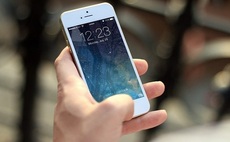HMRC staff to be allowed to select end-user devices for personal productivity, says CIO Mark Hall
iPads might be on the menu for some staff at HMRC, as the tax authority pilots a "choose your own device" policy in response to growing staff demand for a greater say on the kinds of computers that...
To continue reading this article...
Join Computing
- Unlimited access to real-time news, analysis and opinion from the technology industry
- Receive important and breaking news in our daily newsletter
- Be the first to hear about our events and awards programmes
- Join live member only interviews with IT leaders at the ‘IT Lounge’; your chance to ask your burning tech questions and have them answered
- Access to the Computing Delta hub providing market intelligence and research
- Receive our members-only newsletter with exclusive opinion pieces from senior IT Leaders


















